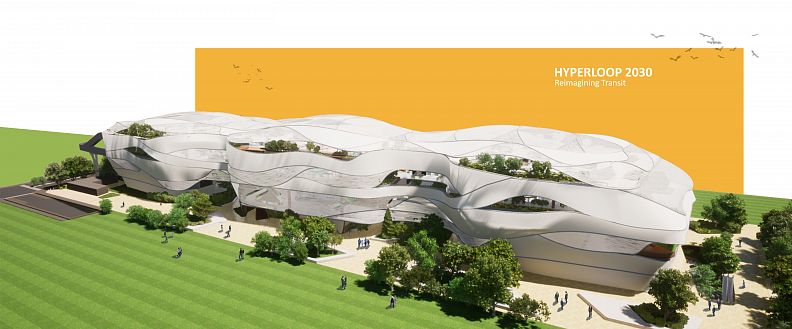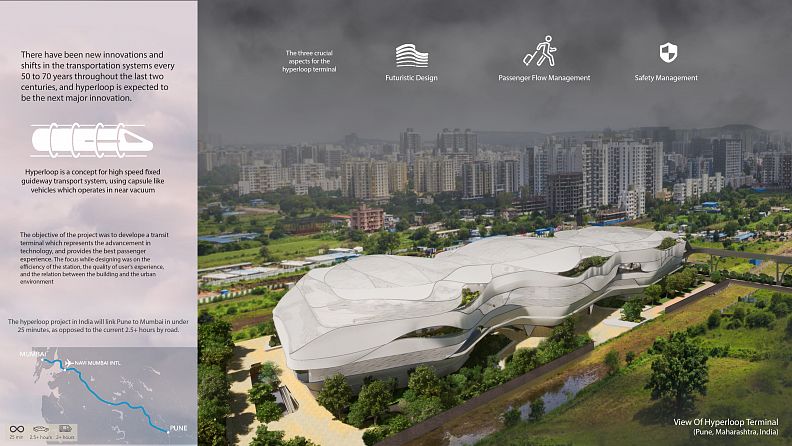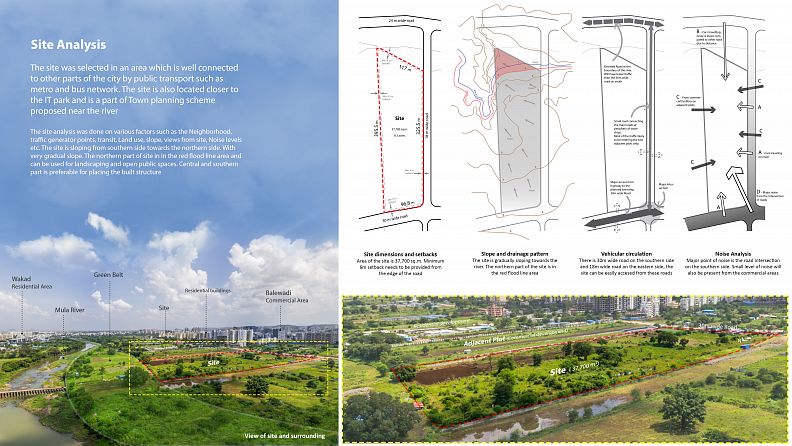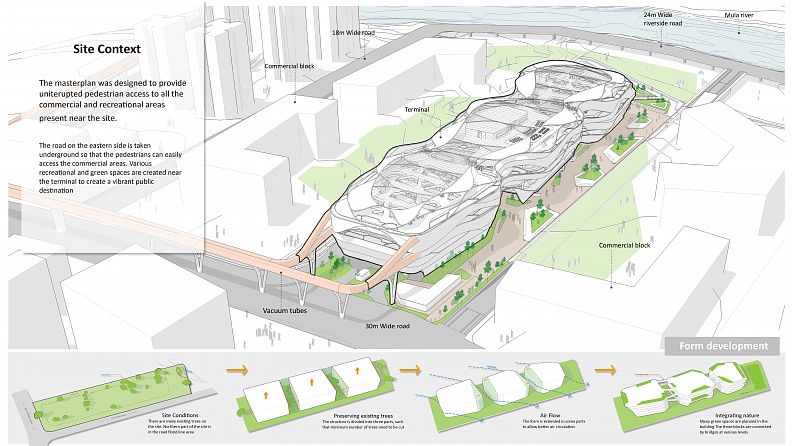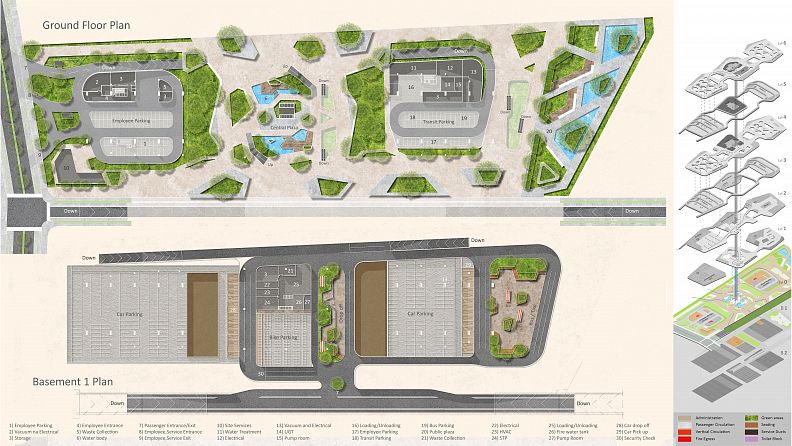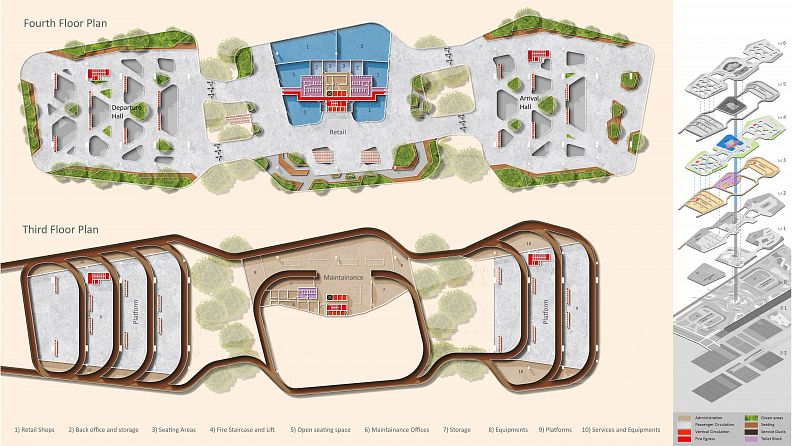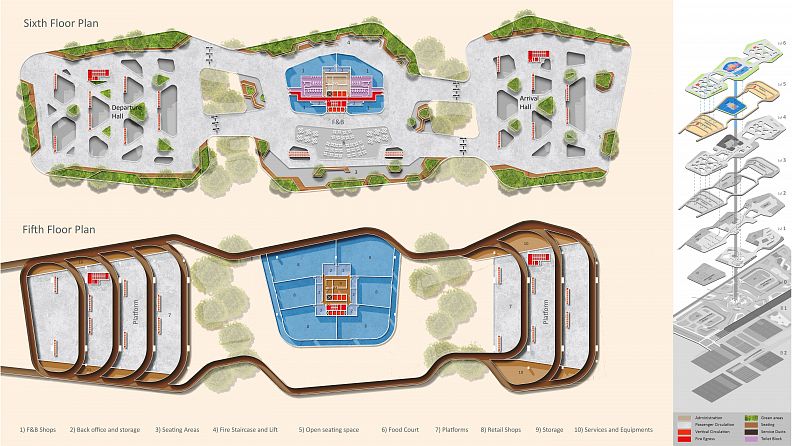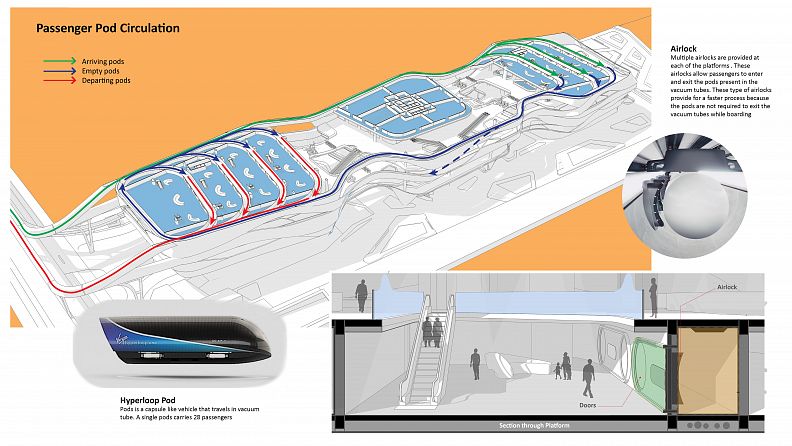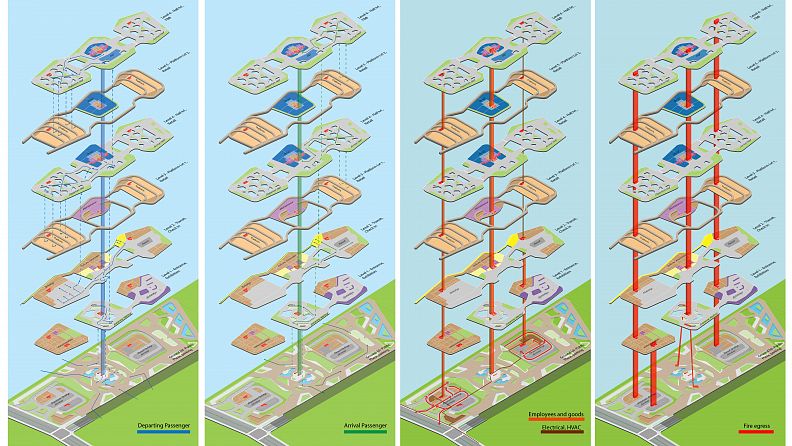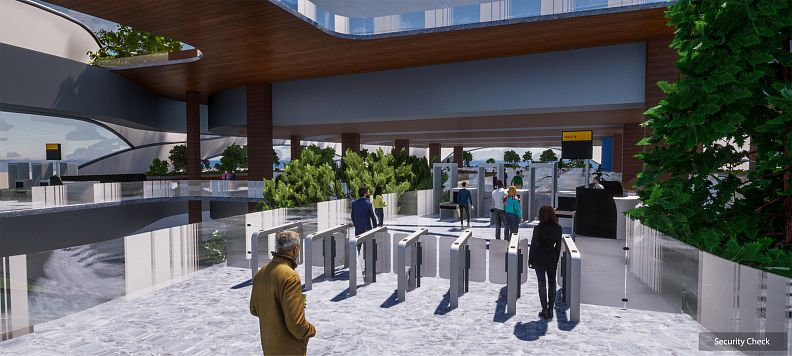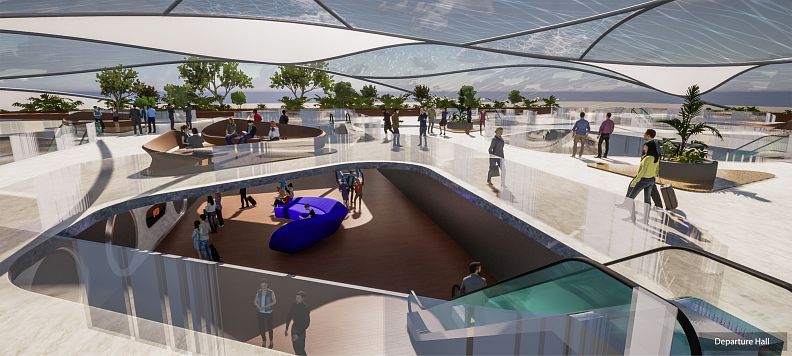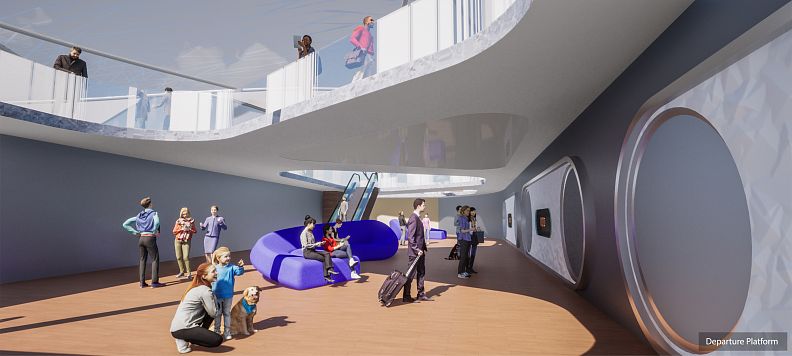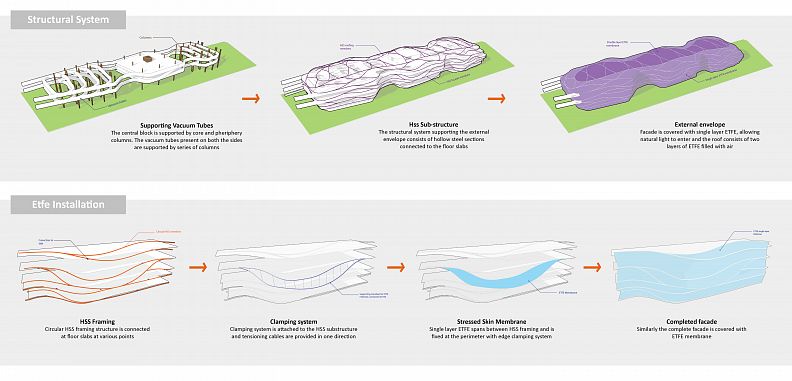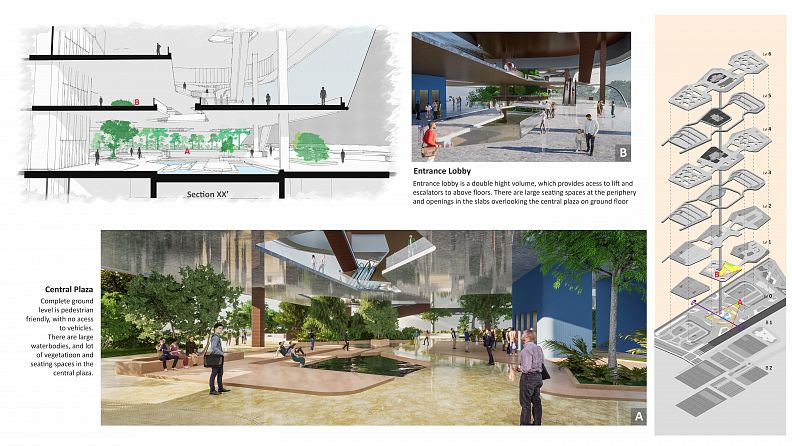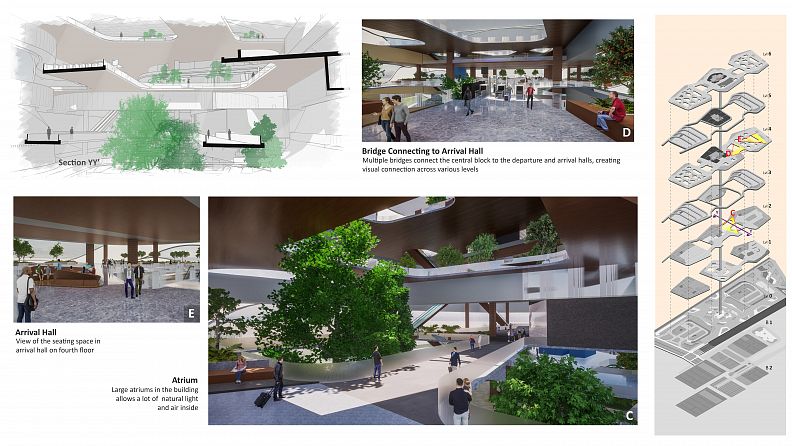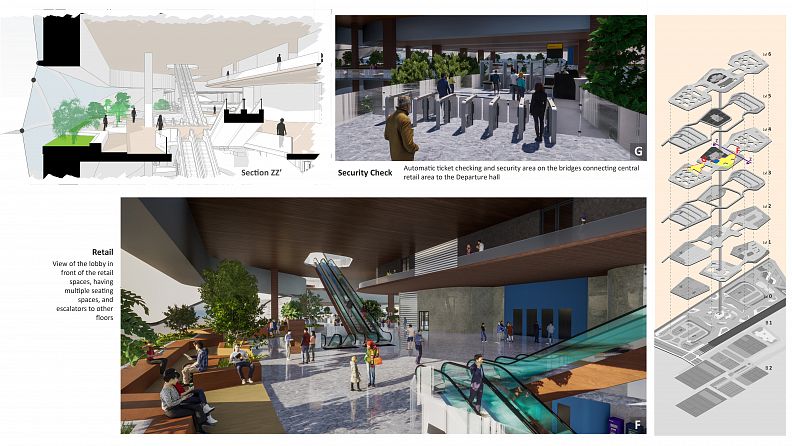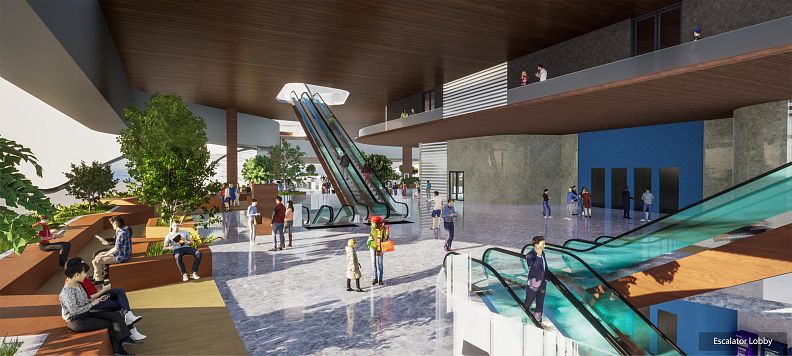Hyperloop 2030 : Reimagining Transit

Project idea
There have been new innovations and shifts in the transportation systems every 50 to 70 years throughout the last two centuries. These advances in technology have changed the way we travel, trade and connect to one another from the ships to trains to automobiles and airplanes. Hyperloop is expected to be the next major innovation that will completely change the travel experience. The objective of the project was to develop a vision for a futuristic hyperloop terminal which represents the advancement in technology, and provides the best passenger experience. Unlike the trains and airports, that require a very large site area, the hyperloop terminal is designed to be more compact, so it can be easily placed in urban centers.
Project description
The project details the design for a terminal station of hyperloop, to be built in 2030. The three aspects that were crucial for the hyperloop terminal were the modern design, passenger flow management, and safety management systems. The focus while designing was on the efficiency of the station, the quality of user's experience, and the relation between the building and the urban environment.
The terminal is technologically advanced, but does not make the passengers feel like they are in a completely alien environment. Rather than providing a dystopian future with dark colours, stark lighting, and lot of screens, the design is a more optimistic view of future, with pleasant colours, green spaces, safe and more pleasant travel experience. Soft curves forms the basis of each of the blocks in the terminal. The organic form is both visually appealing and intended to make the terminal more efficient. Overall, the project create a vision for an optimistic future of transit, where travelling will be a great experience, and the transit terminal will be a destination in itself
Technical information
The terminal is developed to handle more than 180,000 passengers daily, and developed based on modified standards for the airport terminal design. The main structural system supporting the three blocks is made of concrete and the external envelope is made of steel framing. The complete structure is covered with ETFE membrane, which allows a lot of natural light inside the terminal. ETFE is lightweight, requires low maintenance, is environmental friendly and recyclable. It can also be treated to allow different transparencies. The ETFE is covered with organic solar cells which generates the energy required for the terminal. The terminal is developed to have efficient circulation of passengers and services. The internal atriums helps in providing visual connectivity at various levels and helps passengers in orienting themselves. The airlocks and functional systems that allow passengers to enter the hyperloop pods present in vacuum tubes are developed based on concepts proposed by 'BIG and hyperloop one'. Branching system is used for the vacuum tubes to create more number of platforms, which helps in maintaining higher arrival and departure rates.
